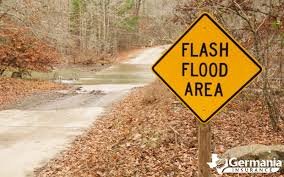Current Flash Flood Warnings Across the United States
Flash flood warnings continue to impact multiple regions across the United States as severe weather systems bring dangerous rainfall to vulnerable areas. The National Weather Service has issued active flash flood warnings for several states, with ongoing threats to life and property from rapidly rising waters.
Deadly West Virginia Flash Flooding Claims Six Lives
At least six people have been killed, and two others remain unaccounted for after dangerous flash flooding impacted Wheeling and surrounding communities in West Virginia over the weekend. Governor Patrick Morrisey confirmed the tragic toll during a Monday morning briefing with FOX Weather Command, highlighting the severe impact of the flooding on the Mountain State community.
The West Virginia flash flooding represents one of the deadliest weather events of the season, with rescue operations ongoing as emergency teams search for the two missing individuals. The flooding struck quickly, giving residents little time to evacuate to higher ground.

New York Severe Weather and Tornado Outbreak
Central New York experienced a devastating weather event that combined both tornado and flash flood threats. An EF-1 tornado was blamed for three deaths, including 6-year-old twin sisters, in central New York on Sunday as the same complex of thunderstorms that killed three people in northern Plains Friday night continued to charge across the northern U.S.
The severe weather system brought multiple hazards to the region, with Doppler radar indicating thunderstorms producing heavy rain across southeastern Oneida County in central New York, with between 1 and 2 inches of rain falling and flash flooding ongoing or expected to begin shortly.
Active Flash Flood Warnings in Colorado
Recent flash flood warnings have been issued for Colorado, with a Flash Flood Warning for El Paso County remaining in effect until late evening. The National Weather Service Pueblo office issued the warning as heavy rainfall threatens to create dangerous flooding conditions in the region.
Colorado’s mountainous terrain makes it particularly susceptible to flash flooding, as heavy rainfall can quickly funnel into valleys and urban areas, creating life-threatening conditions within minutes.
Monsoonal Pattern Brings Continued Threat
Monsoonal moisture continues to bring heavy rain and flash flooding to New Mexico and west Texas through Thursday, according to the National Weather Service. This ongoing weather pattern presents persistent flash flood risks across the Southwest, requiring continued vigilance from residents and emergency management officials.
Understanding Flash Flood Warnings vs. Watches
Flash flood warnings indicate that flash flooding is imminent or already occurring, requiring immediate action to protect life and property. These warnings are issued when conditions are favorable for flash flooding, typically when heavy rainfall occurs over a short period or when dam or levee failures are imminent.
The National Weather Service emphasizes that flash floods can develop within minutes and are the leading cause of weather-related deaths in the United States. Even shallow moving water can be deadly, with just six inches of moving water capable of knocking down an adult.
Safety Measures During Flash Flood Warnings
When flash flood warnings are issued, residents should never attempt to drive through flooded roadways. The National Weather Service’s “Turn Around, Don’t Drown” campaign reminds the public that most flood-related deaths occur in vehicles. Move to higher ground immediately and avoid walking in moving water.
Emergency officials recommend having an emergency kit ready, monitoring weather alerts, and knowing evacuation routes before severe weather strikes. Stay informed through official weather apps, NOAA Weather Radio, and local emergency management communications.
Climate Change and Increasing Flash Flood Risks
Meteorologists note that warming temperatures allow the atmosphere to hold more moisture, potentially leading to more intense rainfall events and increased flash flood risks. This trend emphasizes the importance of improved flood preparedness and infrastructure resilience across flood-prone regions.
